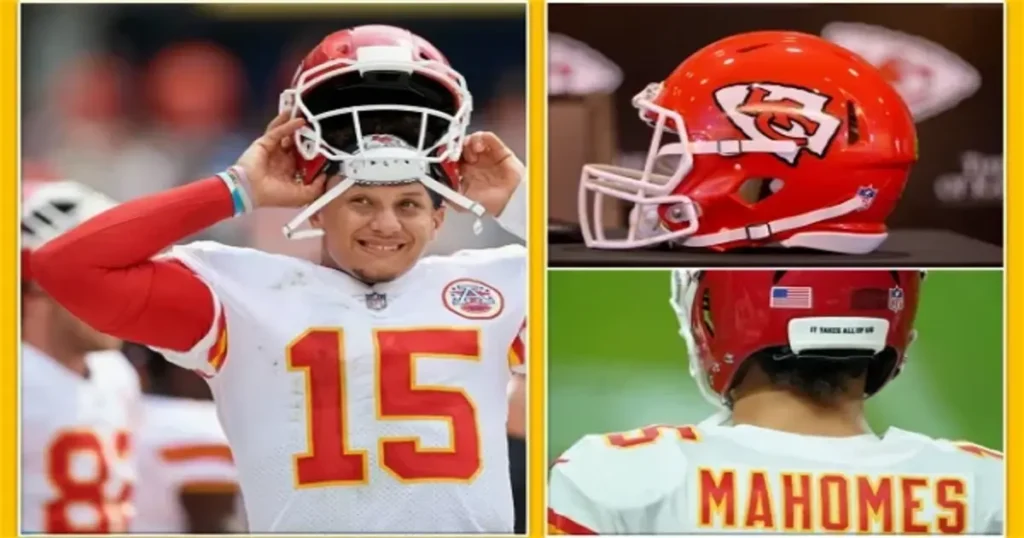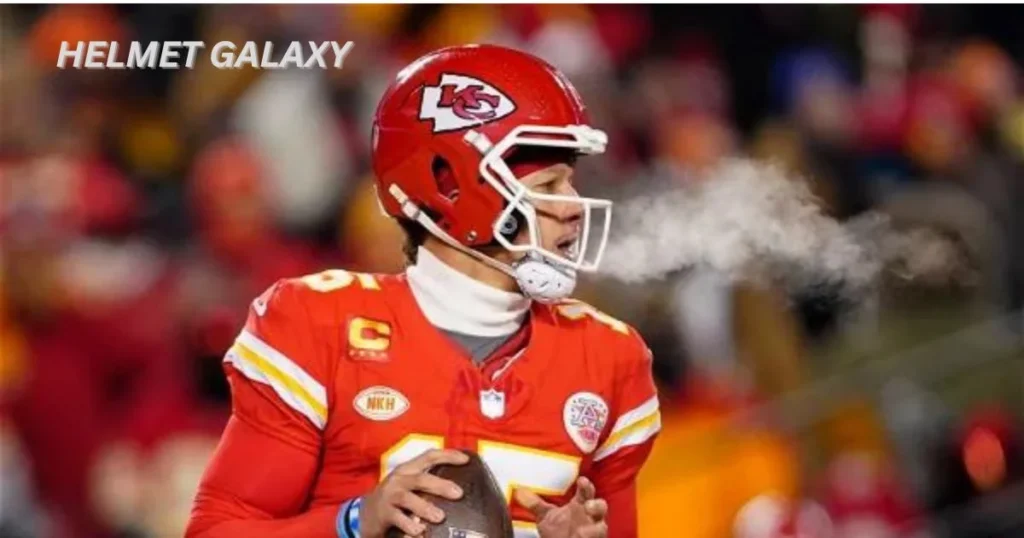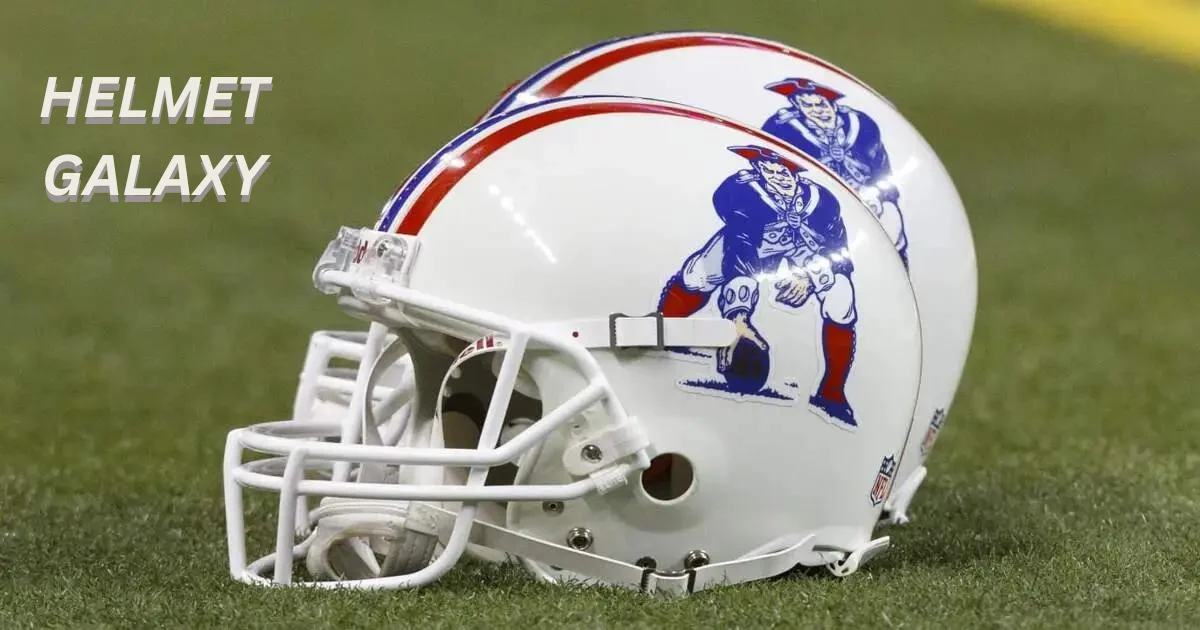NFL helmets sit at the intersection of sports, safety, and science. But this sophisticated protective gear comes at a price – costing far more than typical football helmets. This guide examines the many factors that contribute to an NFL helmet’s exorbitant price tag.
What Are the Typical Components and Features of an NFL Helmet?

NFL helmets incorporate cutting-edge materials and innovations:
- Outer shells made of advanced polymers like polycarbonate or composite blends to balance strength, weight, and durability.
- Interior padding and air bladders crafted from multi-layer foams and liquid crystal polymers for customized cushioning.
- Facemasks with thick titanium and steel alloy cage bars wrought for maximum protection of players’ faces.
- Chin straps featuring high-tension kevlar or specialty nylon blends which withstand heavy forces.
- Specialized face shield visors made of shatter-resistant polycarbonate with advanced anti-glare and optical treatments.
- Helmet communication components like boom mics, rear speaker ports, and antenna connections to enable play calling.
- Advanced fittings including inflatable air bladders and custom padding kits to optimize individual sizing and fit.
The combination of research, engineering, and innovation contributes to NFL helmets’ sky-high production expenses.
How Frequently Do NFL Players Need New Helmets?

NFL helmets sustain rapid wear and tear requiring frequent turnover:
- Helmets are generally replaced every 1-2 seasons due to material breakdown from routine use and impacts.
- If a major impact occurs, that helmet is immediately retired as its protective capacities become uncertain.
- New helmets are often needed as sponsor deals change requiring new paint jobs and trademark alterations.
- Visors, facemasks, and other components crack over time and need replacement as well.
Unlike youth or hobbyist football helmets lasting 5+ years, NFL helmets operate on rapid replacement cycles of continuous stress.
How Do R&D and Testing Costs Contribute to NFL Helmet Pricing?
Extensive R&D and safety testing feeds NFL helmet costs:
- NFL and equipment partners maintain extensive research labs running year-round helmet testing and development. Staffing, facilities, and materials involved add up.
- Helmets require sophisticated on-field impact monitoring systems. Sensors and radio equipment add electronics expenses.
- New models undergo years of design, engineering, prototype revisions and league approvals before production – all expensive.
- The NFL tests helmets in a wider array of impact scenarios versus standards for other football levels.
While ensuring critical protections, the rigorous design process necessitates high overhead ultimately passed to customers.
How Do Limited Production Volumes Impact Per-Unit NFL Helmet Costs?
The niche NFL marketplace increases per-helmet costs:
- Only around 3,000 helmets are produced each year for NFL teams.
- Low volumes prevent economies of scale savings compared to mass retail production.
- Per-unit costs remain flat even if broader helmet sales wane as sponsor deals guarantee NFL inventories.
- Made-to-order customization adds production and inventory costs versus off-the-shelf models.
- Expensive materials and processes avoided in mass market helmets become feasible.
The costs to engineer elite helmets stay high regardless of volumes, raising NFL prices.
How Much Do NFL Helmet Sponsorship Deals Contribute to Costs?

Lucrative equipment sponsorships enable NFL helmet pricing:
- Top brands invest heavily to secure NFL deals and gain exposure. Riddell’s 10-year deal valued at over $100 million.
- Sponsor income subsidizes R&D investments that improve technology but require repayment through sales.
- Brands pass down licensing and royalty costs as well to NFL teams. A portion of each helmet sold goes back to the NFL.
- Sponsor exclusivity lets brands optimize pricing power versus a more competitive market.
While beneficial, sponsorship deals ultimately incentivize premium helmet pricing to recapture investments.
What Are the Typical Base Price Ranges of NFL Helmets?
While variable, base NFL helmet prices routinely top $500:
- Most premium NFL helmets fall between $500-$800 at retail when newly introduced.
- Special vintage or throwback helmets with unique shells and decals exceed $800.
- Limit production anniversary helmets like Super Bowl designs can approach $1000 just for the shell.
- Aftermarket additions like visors, shields, and communication gear add $200+ easily.
- Periodic sales discounts on older or special colorways can dip under $500 temporarily.
Given frequent replacement, NFL players accumulate high helmet costs annually between base prices and add-ons.
How Much Do NFL Helmet Customizations Increase Costs?
Extensive NFL custom options add exponentially to pricing:
- Hand painting helmets with team colors/logos runs $200-$500+ per helmet depending on detail.
- Airbrushing, hydrodipping, chrome finishes add $100-$300 per application to premiums.
- Optical shield visors with anti-glare/anti-fog coatings cost $100+ over standard polycarbonate.
- Helmet communications systems standard in NFL run $1000 per helmet.
- Interior padding and sizer customization adds $50-$100+ per helmet.
NFL caliber protection already costs more before personalization even happens. But custom touches amplify expenses further.
What Percentage of NFL Players Pay for Their Own Helmets Versus Teams Buying Equipment?
NFL teams fully finance helmets as essential gear:
- Per NFL Players Association rules, all safety-related gameday gear must be directly provided and owned by teams.
- This includes helmets along with pads, medical necessities, sideline apparel, etc.
- Teams cannot require players to pay for their own safety equipment or make reimbursements.
- Teams manage all helmet purchasing and replacement.
- Star players with deals may get specialty branded helmets as part of agreements.
NFL players focus on performance rather than equipment logistics that their team handles.
Do NFL Players Get Any Compensation for Wearing Branded Helmets?
No, NFL athletes don’t share in helmet sponsorship revenue:
- League rules prohibit any performance-based pay for wearing branded gear. This aims to prevent influence compromising safety choices.
- Sponsor payments go to NFL teams and the league to reinvest in testing, medical research, and facilities.
- Players may negotiate separate deals for wearing a helmet brand off-field for promotions and ads.
- But no in-game compensation exists even as brands leverage stars’ visibility.
The NFL monopolizes helmet income streams while requiring teams suit players with adequate protection.
5 Key Facts About NFL Helmet Costs
- Frequent helmet replacement due to wear makes costs add up rapidly.
- Extensive R&D for peak safety and performance feeds NFL pricing.
- Limited production volumes prevent cost savings from mass manufacturing scale.
- Sponsor deals enable premium materials and innovations but require repayment through sales.
- NFL helmets retail for well over 10 times more than comparable youth models.
Conclusion
From outer shells to inner padding, NFL helmets represent the apex of sports protection equipment. But such sophisticated engineering and custom-tailored construction come at a steep price tag. While youth football helmets may cost $100-300, NFL counterparts routinely run $500-1000.
The wildly elevated costs stem from many complex factors surrounding materials, safety, research, limited batches, and sponsor obligations. However, NFL franchises view protecting players’ heads as both a moral and competitive necessity. So teams readily absorb helmet costs that would be untenable for amateur players and parents.
In the end, science-tested protection has no fixed price for the world’s elite football league. The actual manufacturing expenses involved take a backseat to delivering demonstrably safer helmets as awareness of chronic risks heightens. This duty of safety helps justify how and why NFL helmets ultimately command a major premium in the larger head protection equipment marketplace.
5 Key Questions About NFL Helmet Costs
1. Do NFL players get to keep their helmets after retiring?
No, NFL helmets remain property of the teams and are seldom if ever given to players upon retirement due to liability and league rules.
2. How much extra do specialty helmets cost, like Pro Bowl or holiday editions?
Special event helmets usually add $200-$500 to pricing over standard helmets due to unique paint, logos, and limited production runs.
3. How much do helmets for NFL referees cost compared to player helmets?
Referee helmets cost approximately $300-$500 since they require less padding, no electronics, and less finishing but still meet standards.
4. Do college and high school teams pay NFL prices for helmets?
No, college and high school helmets cost $150-$500 generally. Unique testing, materials, and sponsor deals drive NFL helmet costs higher.
5. Can NFL players change helmet brands freely or are they under contract?
The NFL’s sponsor deals keep over 90% of players under contract wearing one main brand selected by the league. But some stars have more flexibility.
